38 indexing using labels in dataframe
Delete column/row from a Pandas dataframe using .drop() method Feb 02, 2020 · Columns can be removed permanently using column name using this method df.drop(['your_column_name'], axis=1, inplace=True). To drop a single column from pandas dataframe, we need to provide the name of the column to be removed as a list as an argument to drop function. Remember parameter self? Pandas .drop() function can drop column or row. Indexing and Selecting Data — pandas 0.16.2 documentation pandas provides a suite of methods in order to have purely label based indexing. This is a strict inclusion based protocol. At least 1 of the labels for which ...
pandas Tutorial => Select distinct rows across dataframe Filtering / selecting rows using `.query()` method; Filtering columns (selecting "interesting", dropping unneeded, using RegEx, etc.) Get the first/last n rows of a dataframe; Mixed position and label based selection; Path Dependent Slicing; Select by position; Select column by label; Select distinct rows across dataframe; Slicing with labels
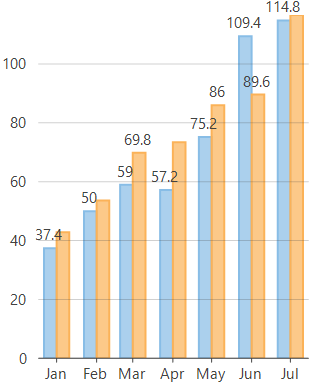
Indexing using labels in dataframe
Accessing columns of a DataFrame using column labels in Pandas - SkyTowner Accessing multiple columns. The only difference with the single-case is that here we pass in a list of column labels as opposed to a single string. Access and update values of the DataFrame using row and column labels. To access columns of a DataFrame using integer indices in Pandas, use the DataFrame.iloc. Python | Pandas DataFrame - GeeksforGeeks Jan 10, 2019 · Indexing a DataFrame using .loc[ ]: This function selects data by the label of the rows and columns. The df.loc indexer selects data in a different way than just the indexing operator. It can select subsets of rows or columns. It can also simultaneously select subsets of rows and columns. Selecting a single row Indexing, Slicing and Subsetting DataFrames in Python Indexing by labels loc differs from indexing by integers iloc. With loc, both the start bound and the stop bound are inclusive. When using loc, integers can be used, but the integers refer to the index label and not the position. For example, using loc and select 1:4 will get a different result than using iloc to select rows 1:4.
Indexing using labels in dataframe. Indexing and selecting data — pandas 1.4.4 documentation pandas provides a suite of methods in order to have purely label based indexing. This is a strict inclusion based protocol. Every label asked for must be in the index, or a KeyError will be raised. When slicing, both the start bound AND the stop bound are included, if present in the index. Tutorial: How to Index DataFrames in Pandas - Dataquest Let's explore four methods of label-based dataframe indexing: using the indexing operator [], attribute operator ., loc indexer, and at indexer. Using the Indexing Operator If we need to select all data from one or multiple columns of a pandas dataframe, we can simply use the indexing operator []. Indexing and Selecting Data — pandas 0.15.2 documentation Basics¶ ; Thus, as per above, we have the most basic indexing using · : In [6]: ; You can pass a list of columns to · to select columns in that order. If a column ... Python Pandas: Get Index Label for a Value in a DataFrame If I know the value in 'hair' is 'blonde', how do I get the index label (not integer location) corresponding to df.ix['mary','hair']? (In other words, I want to get 'mary' knowing that hair is 'blonde'). If I wanted the integer value of the index I'd use get_loc. But I want the label. Thanks in advance.
Indexing and selecting data - Pandas pandas will raise a KeyError if indexing with a list with missing labels. See list-like Using loc with missing keys in a list is Deprecated. pandas provides a ... Indexing and Selecting Data with Pandas - GeeksforGeeks Indexing a DataFrame using .loc [ ] : This function selects data by the label of the rows and columns. The df.loc indexer selects data in a different way than just the indexing operator. It can select subsets of rows or columns. It can also simultaneously select subsets of rows and columns. Selecting a single row Pandas Dateframe Index - Machine Learning Plus To access the row labels use the command DataFrame.index. # Use df.index to view the row indices print(df.index) RangeIndex(start=0, stop=10, step=1) Here, the above output states that the indices are a range of integers that starts from zero and stops before ten. To view the actual row labels, print the indices as a list. pandas.DataFrame.reindex — pandas 1.4.4 documentation DataFrame.reindex(labels=None, index=None, columns=None, axis=None, method=None, copy=True, level=None, fill_value=nan, limit=None, tolerance=None) [source] ¶. Conform Series/DataFrame to new index with optional filling logic. Places NA/NaN in locations having no value in the previous index. A new object is produced unless the new index is ...
Pandas index column title or name - Stack Overflow 2 Aug 2013 — it should be possible to specify index name at DataFrame creation time. e.g. pd.DataFrame(values,index={"INDEX_NAME":index_values}) . I do not ... Working With Specific Values In Pandas DataFrame - Data Courses df.iat[3,7] Pandas DataFrame.ix[ ] Pandas DataFrame.ix[ ] is a slicing method that uses both labels and integers. Pandas offers a hybrid method for selections and subsetting the object using the ix[] operator in addition to pure label-based and integer-based methods. ix[] is the most general indexer, accepting all of the loc[] and iloc[] inputs. Pandas DataFrame Indexing: Set the Index of a Pandas Dataframe Python list as the index of the DataFrame In this method, we can set the index of the Pandas DataFrame object using the pd.Index (), range (), and set_index () function. First, we will create a Python sequence of numbers using the range () function then pass it to the pd.Index () function which returns the DataFrame index object. Indexing in Pandas Dataframe using Python | by Kaushik Katari | Towards ... Indexing using .loc method. If we use the .loc method, we have to pass the data using its Label name. Single Row To display a single row from the dataframe, we will mention the row's index name in the .loc method. The whole row information will display like this, Single Row information Multiple Rows
What does the pandas DataFrame.index attribute do? - tutorialspoint.com In pandas.DataFrame the row labels are called indexes, If you want to get index labels separately then we can use pandas.DataFrame "index" attribute. Example 1 In this example, we have applied the index attribute to the pandas DataFrame to get the row index labels.
The Pandas DataFrame: Make Working With Data Delightful This Pandas DataFrame looks just like the candidate table above and has the following features: Row labels from 101 to 107; Column labels such as 'name', 'city', 'age', and 'py-score' Data such as candidate names, cities, ages, and Python test scores; This figure shows the labels and data from df:
Pandas DataFrame Indexing Streamlined - Brandon Rohrer In pandas data frames, each row also has a name. By default, this label is just the row number. However, you can set one of your columns to be the index of your DataFrame, which means that its values will be used as row labels. We set the column 'name' as our index. It is a common operation to pick out one of the DataFrame's columns to work on.
Indexing and Selecting Data — pandas 0.13.1 documentation This plot was created using a DataFrame with 3 columns each containing floating point values generated using numpy.random.randn(). Take Methods¶. Similar to ...
How To Find Index Of Value In Pandas Dataframe - DevEnum.com 2. df.index.values to Find index of specific Value. To find the indexes of the specific value that match the given condition in Pandas dataframe we will use df ['Subject'] to match the given values and index. values to find an index of matched value. The result shows us that rows 0,1,2 have the value 'Math' in the Subject column.
Multi-level Indexing in Pandas - Python Wife Using a multi-index we create a hierarchy of indices within the data. So, instead of date, we will pass in a list of strings. This will indicate to Pandas that we want all the column names to act as the index for our DataFrame. tech. set_index (['date', 'name'], inplace = True) The resultant DataFrame is a multi-index.
Intro to data structures — pandas 1.4.4 documentation DataFrame.from_dict. DataFrame.from_dict takes a dict of dicts or a dict of array-like sequences and returns a DataFrame. It operates like the DataFrame constructor except for the orient parameter which is 'columns' by default, but which can be set to 'index' in order to use the dict keys as row labels.
How to Subset a DataFrame in Python? - AskPython This line of code selects rows from 1 to 7 and columns corresponding to the labels ‘population’ and ‘housing’. Subset a Dataframe using Python iloc() iloc() function is short for integer location. It works entirely on integer indexing for both rows and columns. To select a subset of rows and columns using iloc() use the following line ...
python - dynamic indexing using labels in pandas - Stack Overflow I would like to dynamically index elements of a pandas DataFrame using labels. Say I have df1 = pd.DataFrame (np.random.randn (6, 4), index=list ('abcdef'), columns=list ('ABCD')) and I want the element with labels 'a' and 'A'. "Statically" it's easy: df1.loc ['a','A'] But how to do build such a query dynamically at runtime?
Indexing and selecting data — pandas 1.4.4 documentation The axis labeling information in pandas objects serves many purposes: Identifies data (i.e. provides metadata) using known indicators, important for analysis, ...
Label-based indexing to the Pandas DataFrame - GeeksforGeeks In the above example, we use the concept of label based Fancy Indexing to access multiple elements of data frame at once and hence create two new columns ' Age ' and ' Marks ' using function dataframe.lookup () Example 3: Python3 import pandas as pd df = pd.DataFrame ( [ ['Date1', 1850, 1992,'Avi', 5, 41, 70, 'Avi'],
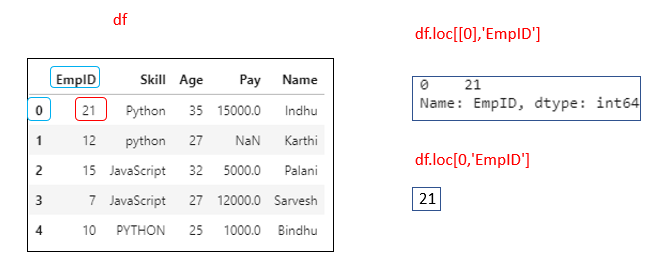
Indexing and Slicing Python Pandas DataFrame | by Indhumathy Chelliah | Towards AI | Oct, 2020 ...
Indexing, Slicing and Subsetting DataFrames in Python Indexing by labels loc differs from indexing by integers iloc. With loc, both the start bound and the stop bound are inclusive. When using loc, integers can be used, but the integers refer to the index label and not the position. For example, using loc and select 1:4 will get a different result than using iloc to select rows 1:4.
Python | Pandas DataFrame - GeeksforGeeks Jan 10, 2019 · Indexing a DataFrame using .loc[ ]: This function selects data by the label of the rows and columns. The df.loc indexer selects data in a different way than just the indexing operator. It can select subsets of rows or columns. It can also simultaneously select subsets of rows and columns. Selecting a single row
Accessing columns of a DataFrame using column labels in Pandas - SkyTowner Accessing multiple columns. The only difference with the single-case is that here we pass in a list of column labels as opposed to a single string. Access and update values of the DataFrame using row and column labels. To access columns of a DataFrame using integer indices in Pandas, use the DataFrame.iloc.


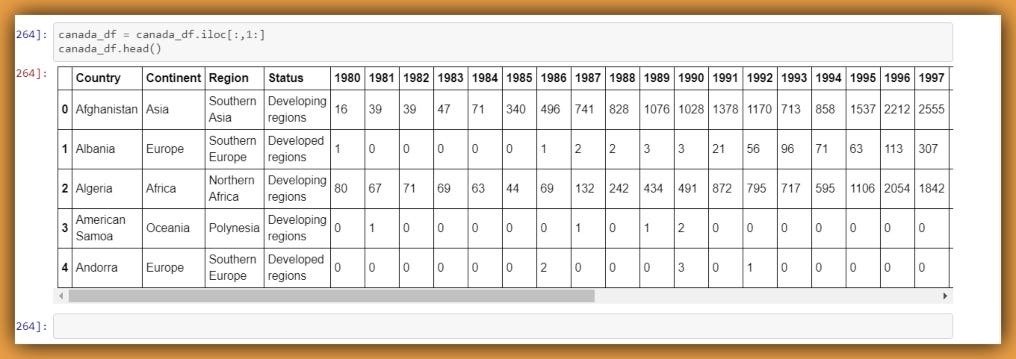
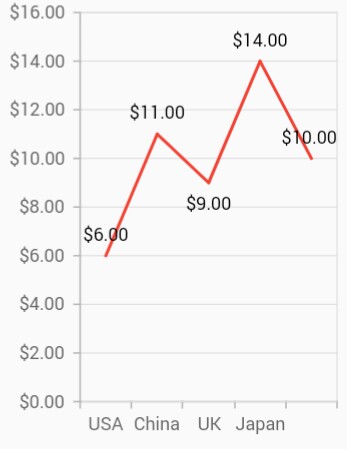

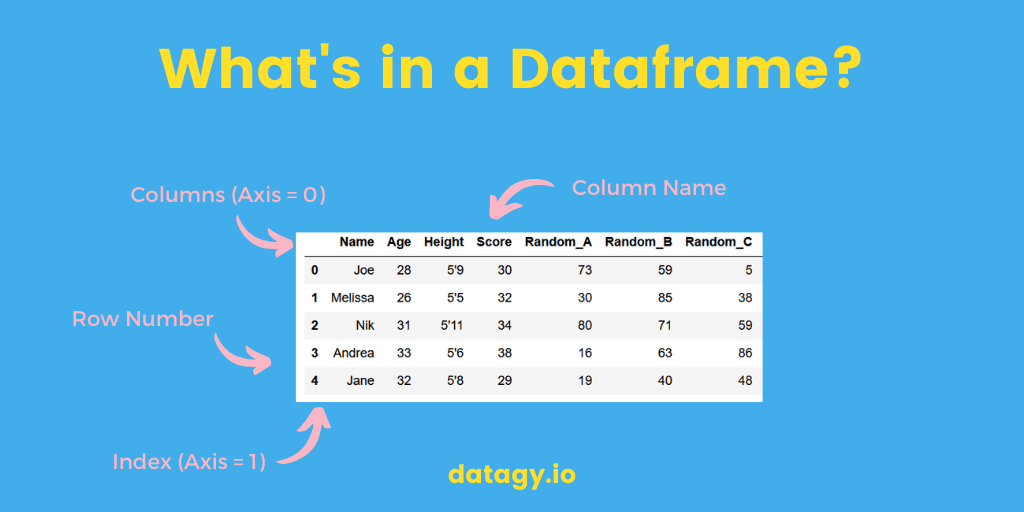









Post a Comment for "38 indexing using labels in dataframe"